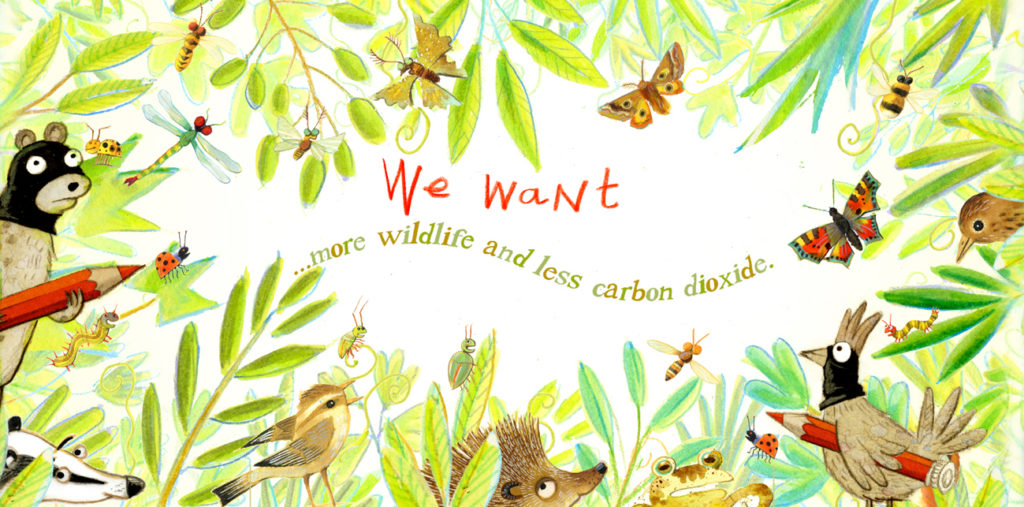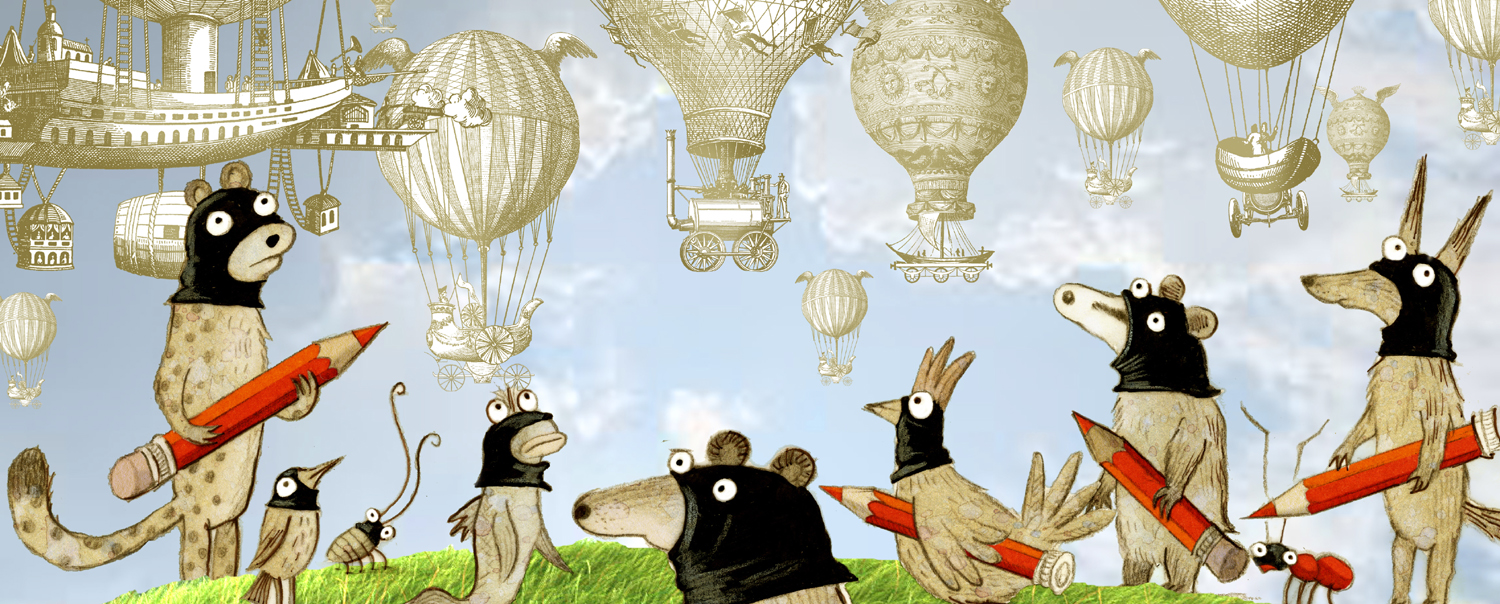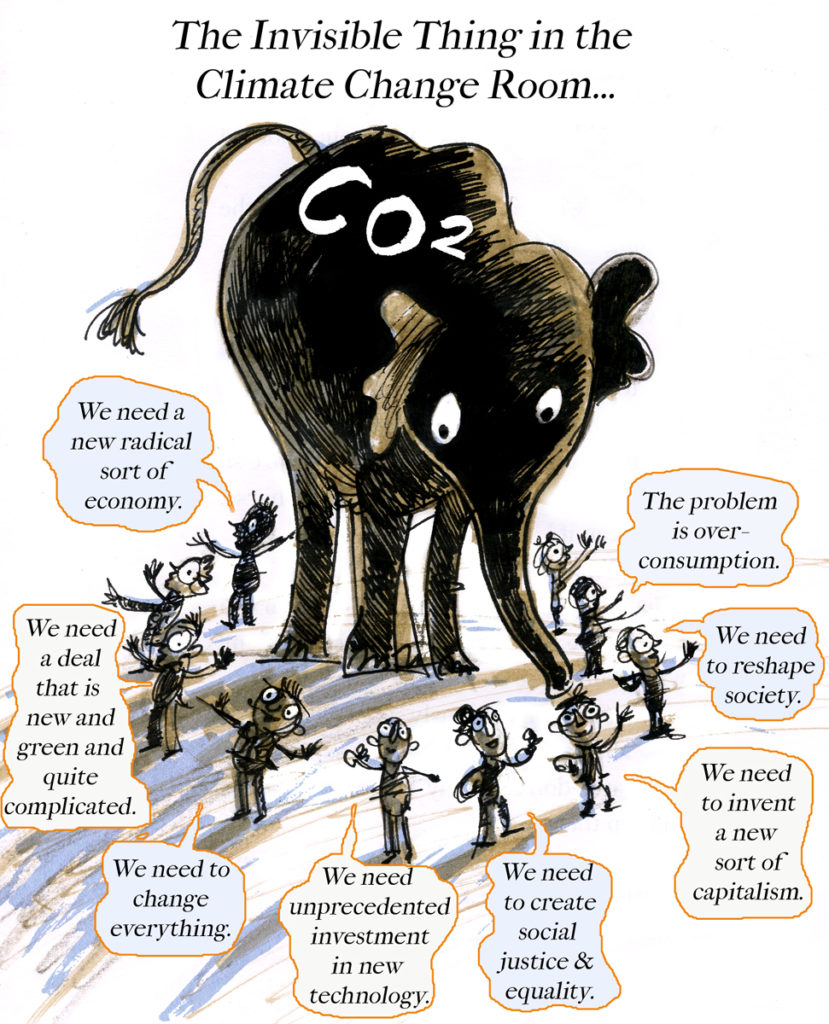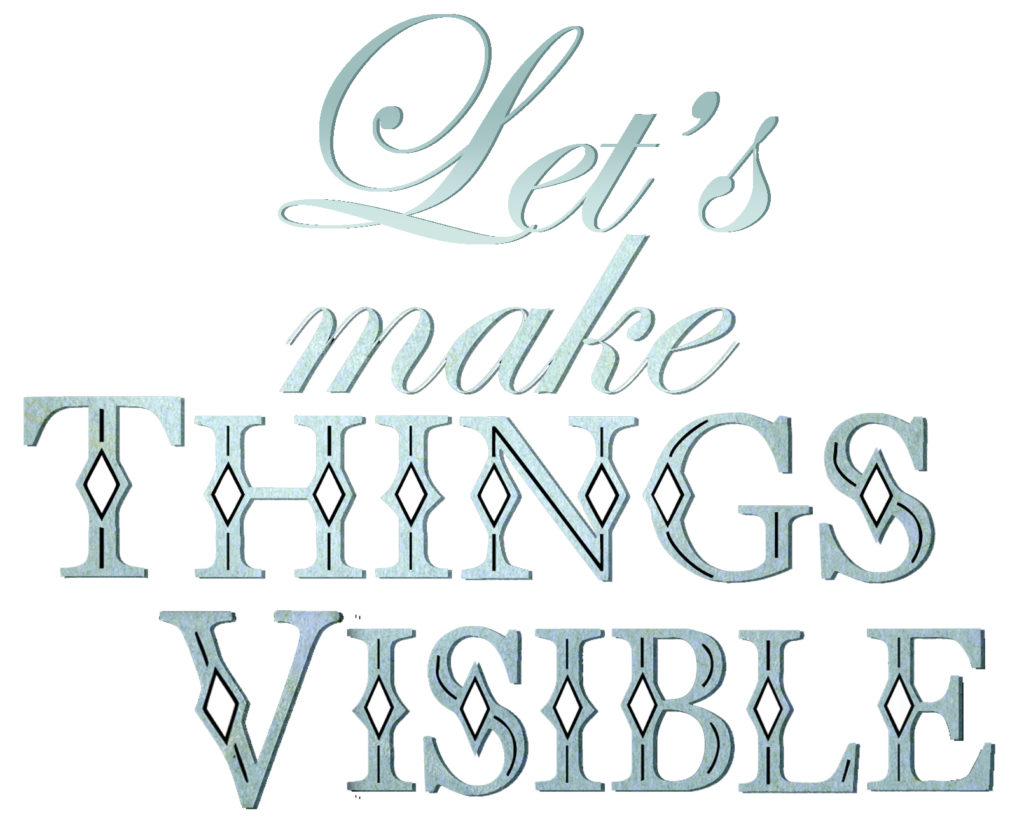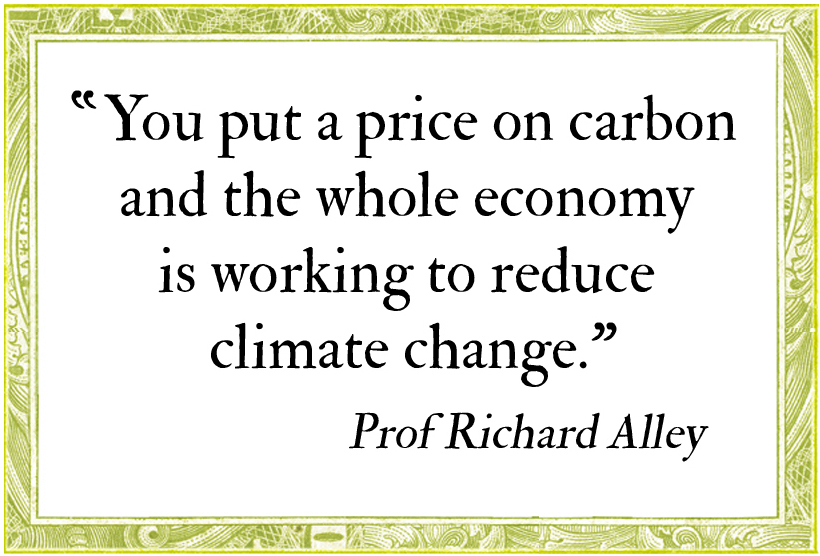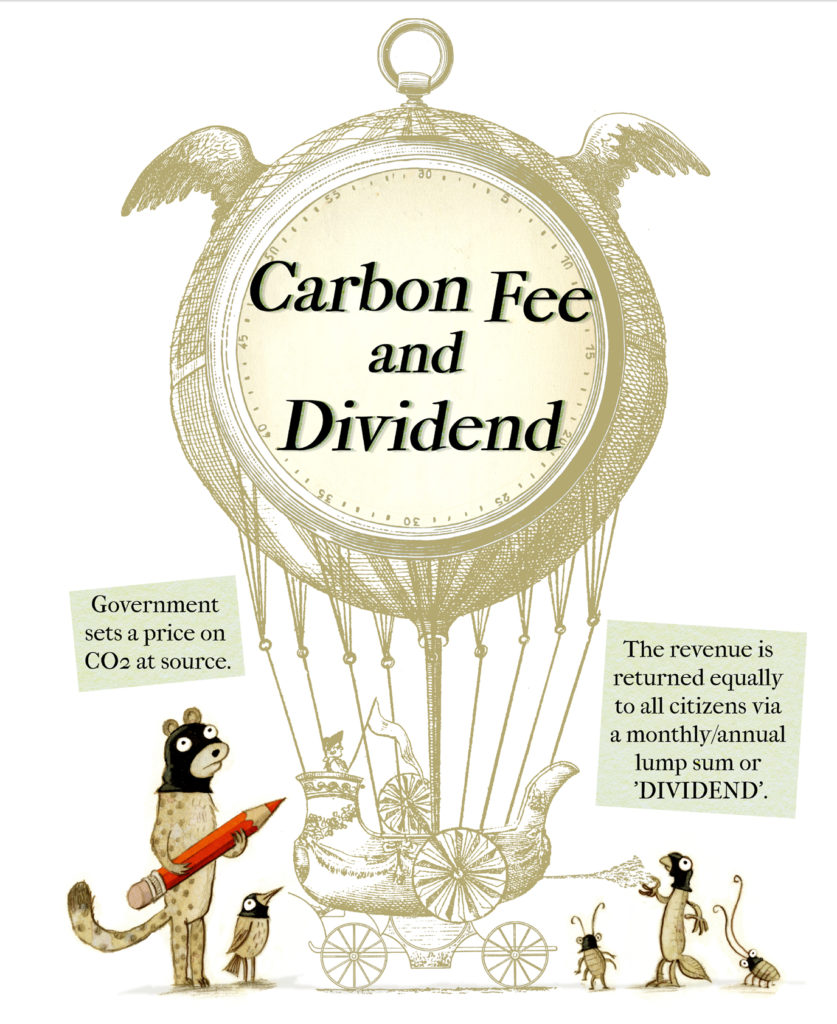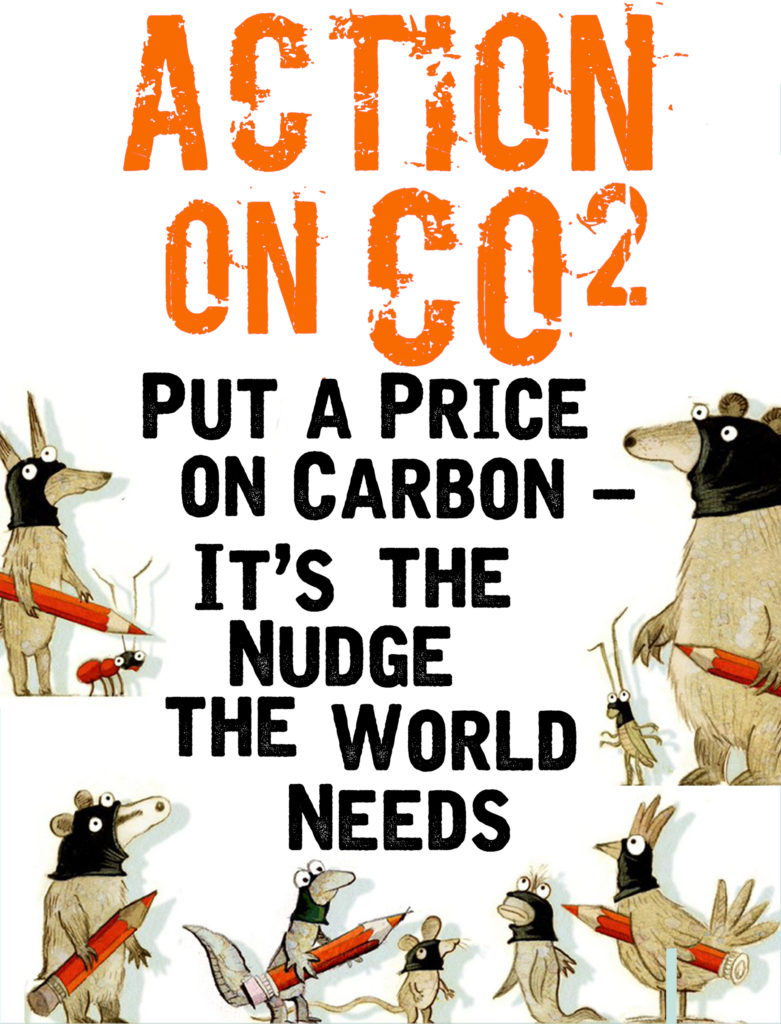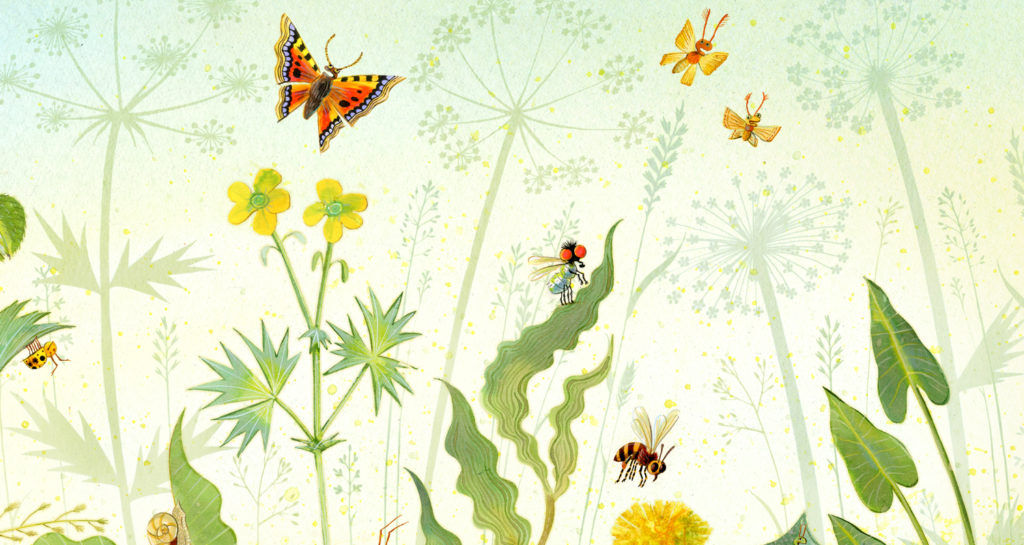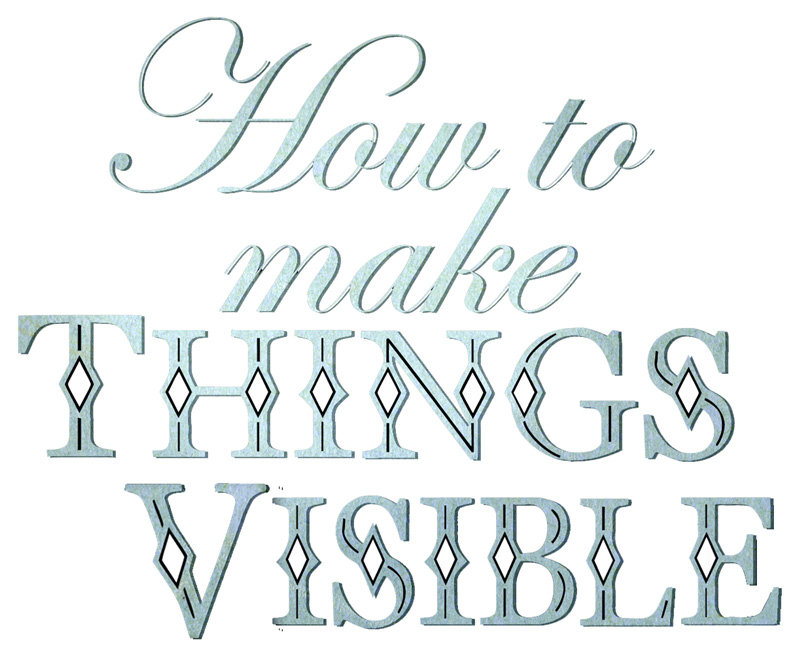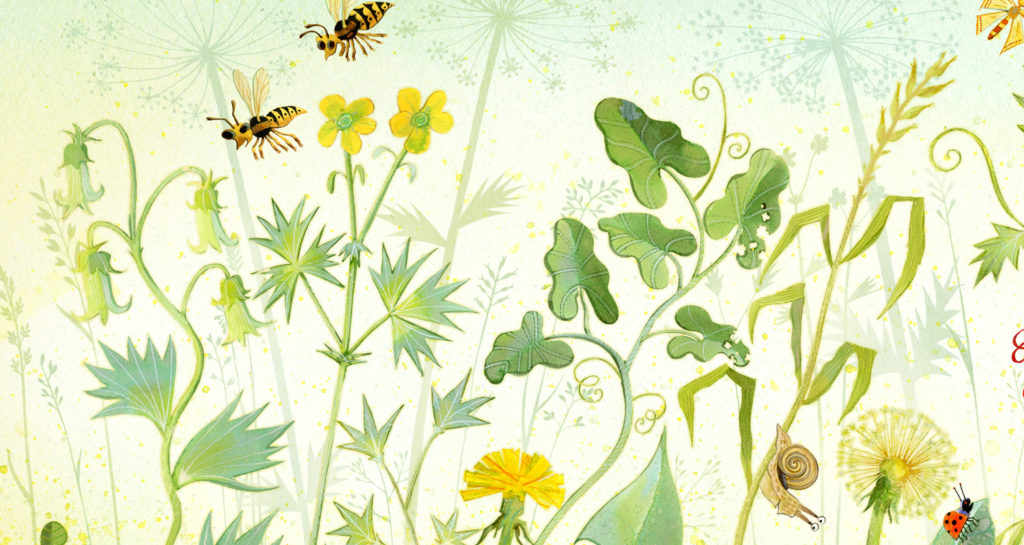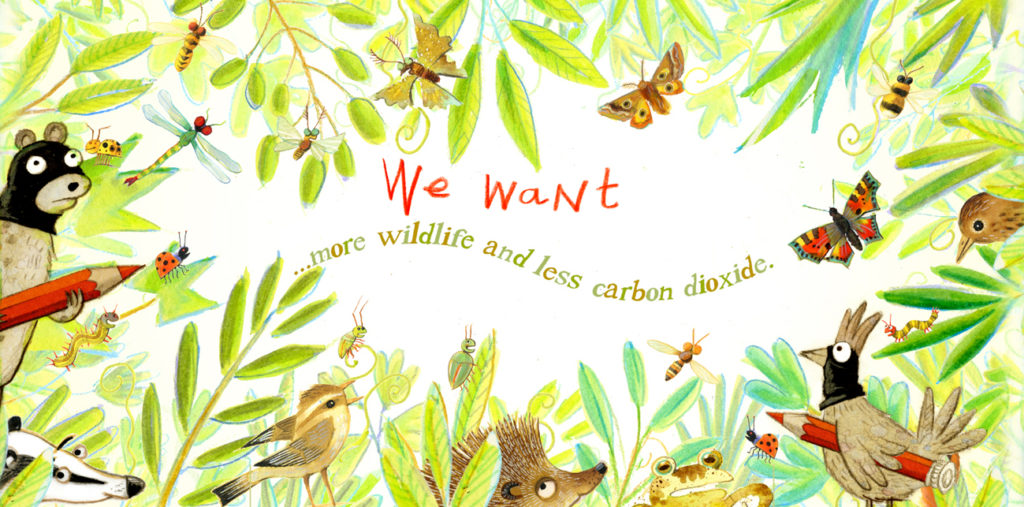Continuing Sketching Weakly’s ongoing mission to Rule the World. This post is continuing from Less Carbon Dioxide, and If Sketching Weakly Ruled the World....
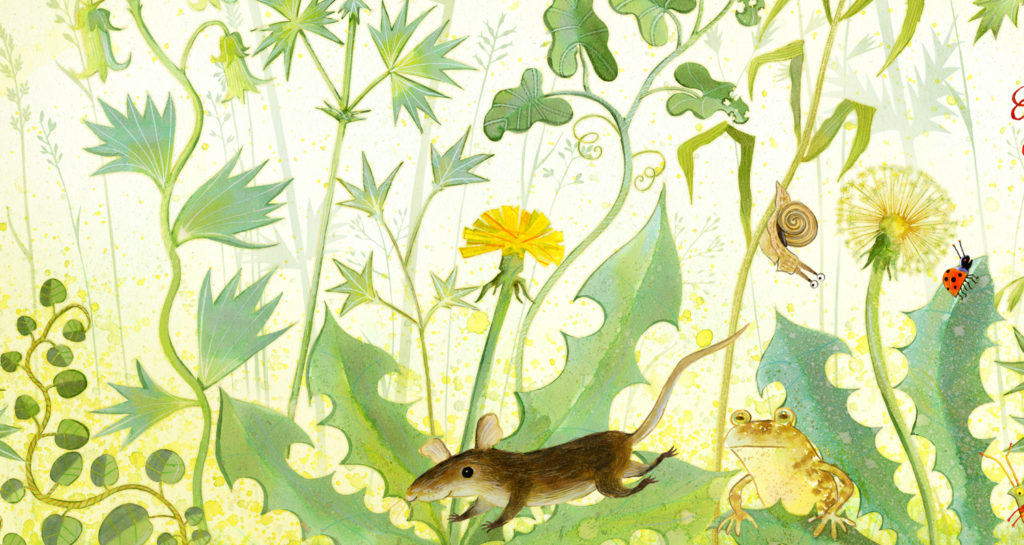
Nature is our climate crash mat. Nature, in so many ways, can help buffer the world against climate change. From forests producing rainfall and sequestering moisture to urban trees cooling and shading their local area, to flood prevention, to pollination, to minibeasts controlling pests on crops, nature can increase our climate-change resilience. And boosting nature is always a WIN-WIN – because you get the flood prevention/rainfall/shade/habitat/etc PLUS the cascades of animal life and beauty that humans love, and the resilience of having more biodiversity to adapt to a changing world..
Climate change is going to hit nature – there will be moving temperature zones, changing habitats – so if animals can’t move, they’ll die out in that area. So we need connected habitat everywhere for our nature to move around to where it needs to be.
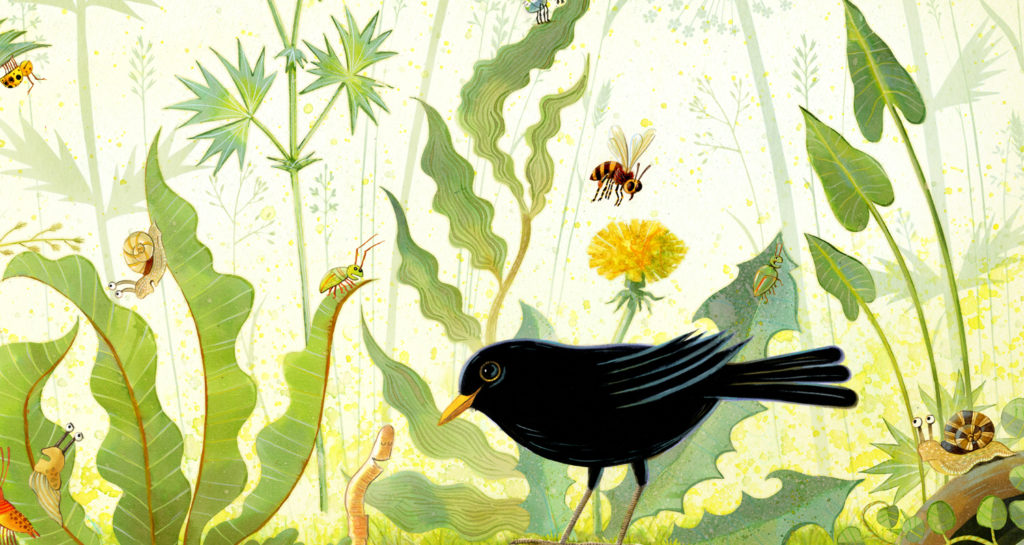
Our relationship with nature has changed. Back in 1532 Henry VIII’s Preservation of Grain Act made it compulsory for every man, woman and child to kill as many creatures as possible that appeared on an official list of ‘vermin’. Virtually all wild animals were on the list: otters, beavers, hedgehogs – even kingfishers. That kind of wildlife massacre would be unthinkable now.
So why does nature still get wallopped?
The main culprits are generally agricultural practices and land-use change. Wild habitat gets converted into farmland. And intensive farming practices leave no space for wild habitat. Roads fragment habitat. Housing developments often feature more car parking space than habitat.
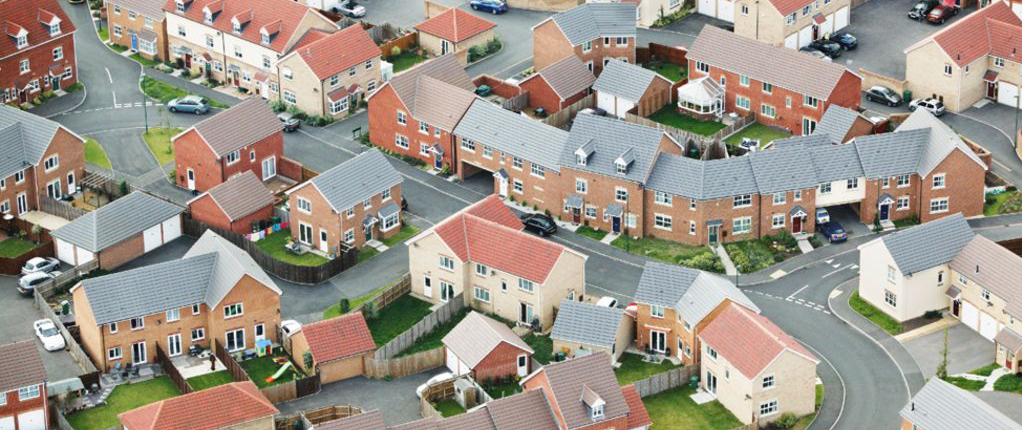
I’d suggest three changes to help create more space for nature. These changes all involve
A National Planning Policy Framework that puts habitat-protection and creation at the heart of planning developments.
An Agriculture Bill that fosters farming practicies that are wildlife-friendly.
A Packaging Revolution that makes it easy to buy products that have been produced in a biodiversity-friendly way.
1. The National Planning Policy Framework: the way we build things
At present, the National Planning Policy Framework (NPPF) has, at its heart,“a presumption in favour of sustainable development, which should be seen as a golden thread running through both plan making and decision taking.” But sustainable development is a slippery concept; in my opinion development is ‘sustainable’ if it can continue for ever at that level with no loss of biodiversity. But if you are gradually increasing the amount of built over land – the end result must be gradual loss of nature. I’d propose a change of emphasis, from a golden thread to a green thread: I propose we build for biodiversity: we put nature at the heart of planning. Established habitat should have extremely high value; destroying ancient woodland and green belt land should be an unthinkably expensive thing to do. We should plan for as little tarmac as possible – cars can be parked on all sorts of surfaces. Developments should conserve established habitat and build around established trees and hedgerows. After all, somebody already lives there. Green belt land should not be converted into built developments: green belt land is exactly the kind of green space most treasured by people as it is close to where settlements of people live. It’s not ours to nibble away at and pave over – it is our gift to future people so they can live close to nature too. It’s ever-tempting to develop green belt land because it’s cheap to convert and will be the type of place that people will like to live – but that takes something we all share and converts it into a one-off profit that is now out of the shared commons – so it is a robbery from all of us and from people of the future.
The present NPPF requires that councils set aside land for building new housing upon for the next 5 years. This just isn’t sustainable UNLESS the land set aside is land that has been built upon already. We need to become the first animal ever to voluntarily limit our own effects on the world, and tread more lightly and imaginatively on our planet.
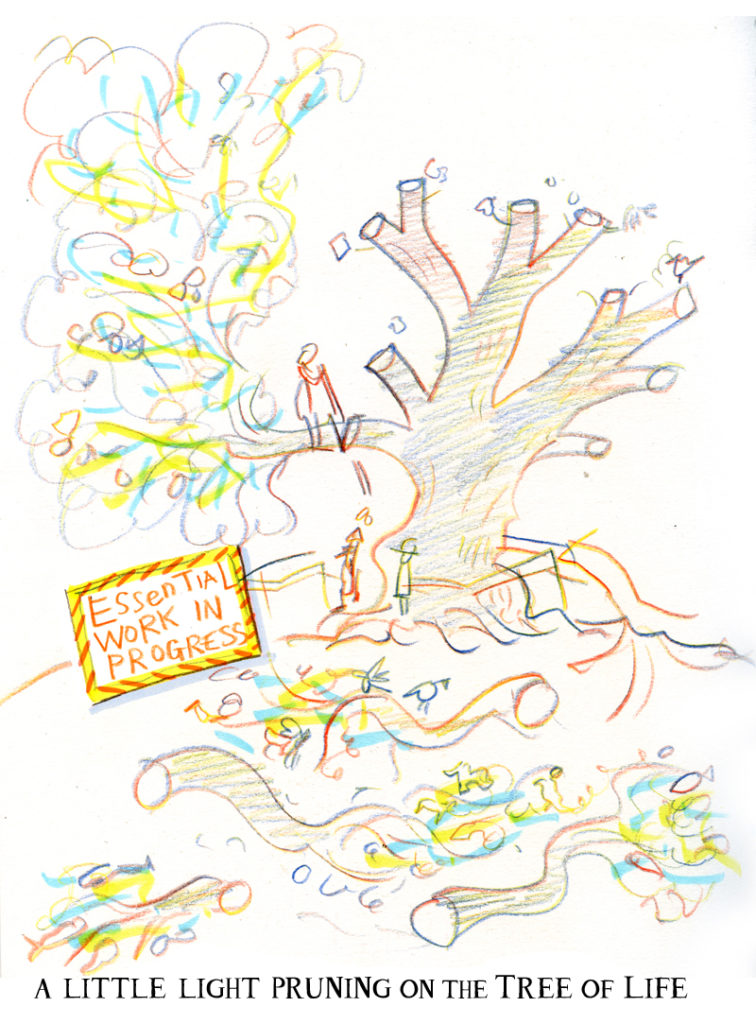
Biodiversity is our Green Infrastructure – it can buffer us egainst extremes of flooding and heat. It is so valuable, but it’s not factored properly into economic decisions – it’s a classic market failure situation. To address this – we need legislation. So I would propose a NPPF with boosting biodiversity at its heart, with a mandate to measure biodiversity and land-use change.

2. The Agriculture Bill: the way we farm animals
Some things happen because it’s free to do them. There are some ways of farming that are absolute planet wreckers. Here are some:
Intensive animal farming: if we saw it we wouldn’t like it. It’s only allowed to happen because it’s invisible. Animals are kept indoors or on feed lots in huge numbers, living miserable lives. These type of industrial ‘farms’ are called Concentrated Animal Feeding Operations, or CAFOs. And they’re not just in other countries: we have them in the UK. These animals are fed planet-wrecking foodstuff like soy grown on deforested land. The animal density makes them a hotspot for disease and the overuse of antibiotics. They’re unpleasant to live near to, and generate huge quantities of animal sewage which has to go somewhere. This is total madness, and just plain cruel. And it’s so we can have cheap food. But this cheap meat has a massive real price-tag in animal suffering, disease and destruction of habitat. I’d include trawling and other intensive fishing practices in this destructive intensive farming group, as well as fish-farming of predator fish like salmon.
We can’t afford to farming these ways any more, it’s time to move to properly sustainable farming practices.
We can can make UK agriculture a model for planet-friedly farming to be really proud of – farmers are already trying to do this, and the UK landscape is incredibly suitable to animal-friendly farming.
So what do we want more of?

Things like:
In the sea: the marine farming of kelp, mussels and oysters that creates habitat for other sea live to thrive.
Farming with biodiversity as its friend, leaving field margins wild and leaving some waste around to feed farmland birds; using natural predators to help control unwanted pests, farming to boost soil health, farming animals where they can live a natural life in the landscape, allowing trees to grow to boost biodiversity and help manage water in the landscape.
Farmers often try to do these things anyway – but they also often have to compete on a level playing field with others who farm intensively to produce food more cheaply.
There’s a new Agriculture Bill travelling through parliament at the moment. Our new agriculture bill needs to reward farming for biodiversity and reward growing our green infrastructure to be our climate change crash mat – and it looks like it broadly will do that, with a ‘payment for public goods’ ethos rather than the EU CAP payment by quantity of land held. But we also have to use the same standards to measure farmed imports that enter our country too, or UK farming will be fatally undermined.

And we can reward nature-friendly farming practices another way at the same time by making it easy to buy planet-friendly products, with….
3. A Packaging Revolution: make ethical buying choices easy to do
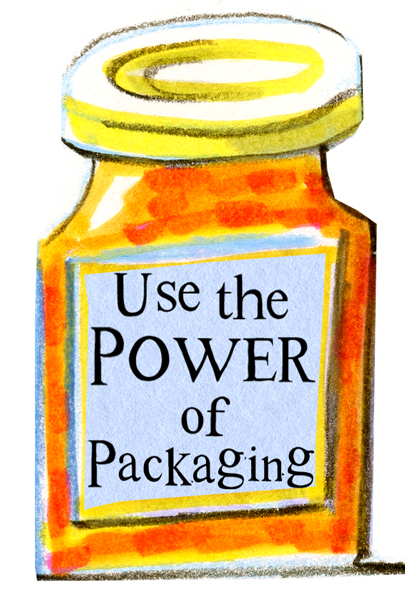
SORROW AT THE SUPERMARKET
I am a hasty impatient shopper who doesn’t have the time and diligence to check out the supply chains for all the products I buy. I want to be able to wander into a supermarket and instantly be able to choose the products that are good for the planet.
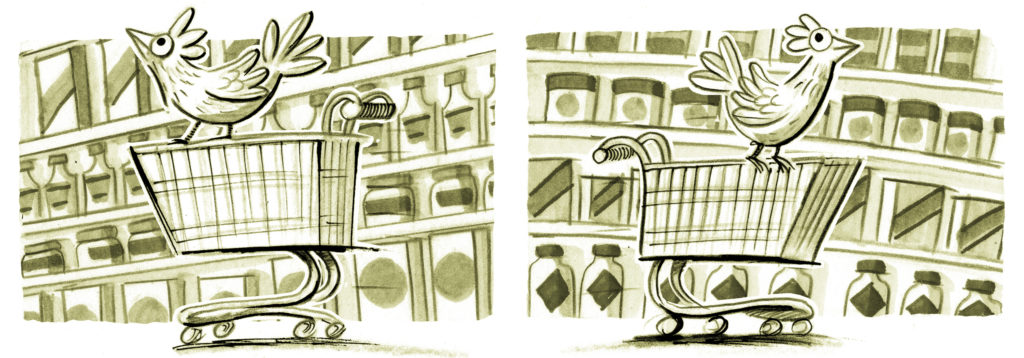
Government action stepped in and revolutionised the packaging of cigarettes. We can all agree that cigarettes are pretty bad for human health. Now cigarette packets look so grim, it’s impossible to buy them without being aware of what you’re buying into. But intensive agricultural practices are killing our planet’s biodiversity. It’s another robbery.
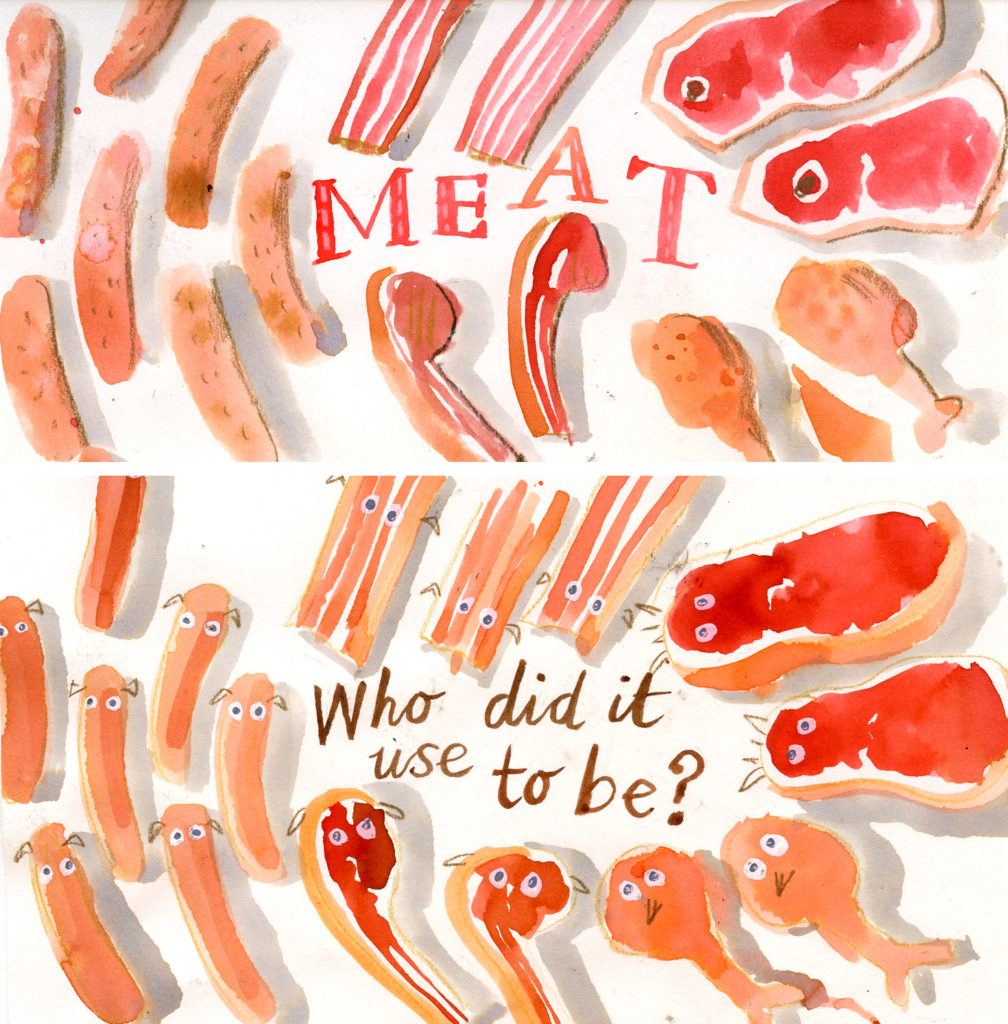
Packaging is hugely influential. There’s been an enormous success in egg-packaging: legislation to require clearly stating the conditions hens were raised in has really boosted demand for free range and barn-raised eggs.
At the moment there are certain symbols you can look for on farmed products: there’s the Soil Association mark, RSPCA-acccreditation, the Red Tractor mark and the Lion Brand symbol. The first two do ensure environmentally-friendly or animal friendly farming. The second two ensure a moderately basic amount of animal welfare and ensure the origin is British. Compassion in World Farming is calling for much more explicit animal-product packaging that really shows the conditions the animals lived in.

But the buyer still has to do a lot of fine-print reading, plus the labelling only applies to animal-products, and I want to buy into farming for biodiversity too.
What if there was a symbol – say an Ethical Earth symbol, that could be put on all packaging?

The ethical farming practices to earn the Ethical Earth Symbol would need to be agreed upon by a panel which would need to be unpartisan and have the interests of the planet and its future at heart, and also the interests of the animals farmed. Practices might include: nature-friendly farming with biodiversity as its friend; farming where animals live in a natural way in a natural habitat; farming that boosts biodiversity and creates more habitats on land and at sea. Achieving organic status is very difficult; Ethical Earth status could be less ‘all or nothing’, it could be more ‘every little helps’, with a broad menu of biodiversity friendly farming practices to choose from that would add to gaining Ethical Earth status, without having to tick every box.
And just as importantly, there have to be certain farming practices that disqualify you from achieving the Ethical Earth symbol. These would have to be agreed, but I’d suggest: animals stocking densities beyond a certain level, animals living in conditions where they are unable to express their natural behaviour, animals fed on products that have caused deforestation.

So, if you farm in a nature-friendly way, that boosts habitat and biodiversity, and is not cruel to animals, I should be able to see that easily on your product on the supermarket shelves, and I might be prepare to pay more for it. Cheap food is often just food where the costs have been passed on to everyone and people of the future in degradation. This is possible because packaging hides the truth about where the food came from.
There’s amazing amounts of data available nowadays – it’s possible to track individual animals through supply chains; this could help in the earning of an Ethical Earth symbol. At the same time, to push change harder, there could be an Unethical Earth hazard symbol that you have to put on your packet if you haven’t achieved an Ethical Earth standard. It ought to be possible to request Ethical Earth-rated products only when you do your online shop. Having the Ethical Earth symbol or the symbol of not-having-achieved it could be mandatory on all food packaging, so you could buy Ethical Earth chocolate biscuits – if it’s possible to make such a thing. And that means with my buying choices I’m now supporting producers in other countries who are farming sustainably and not destroying rainforest habitat.
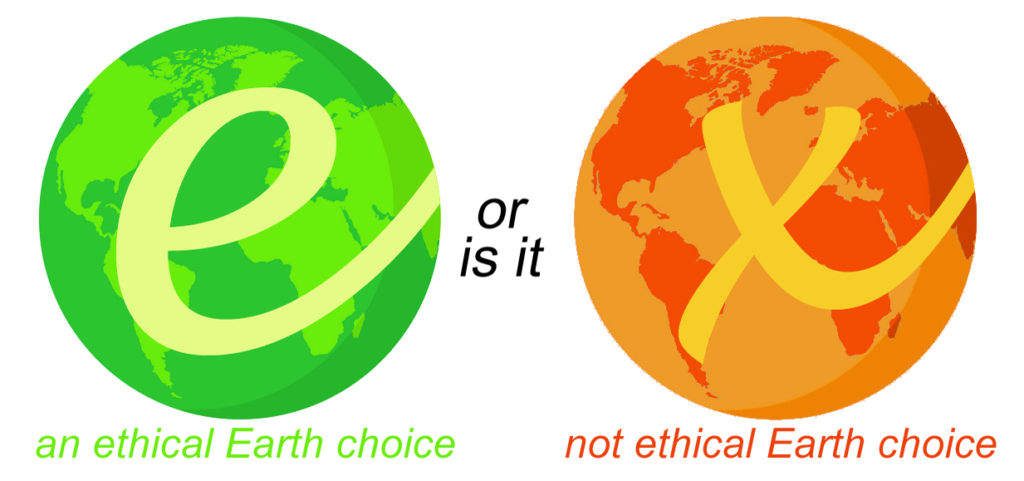
On the supermarket shelves, the world and its biodiversity is on sale. A Packaging Revolution could enable everything you buy to be a vote for what you want more of. When you choose the Ethical Earth symbol – you could be buying into a better planet.
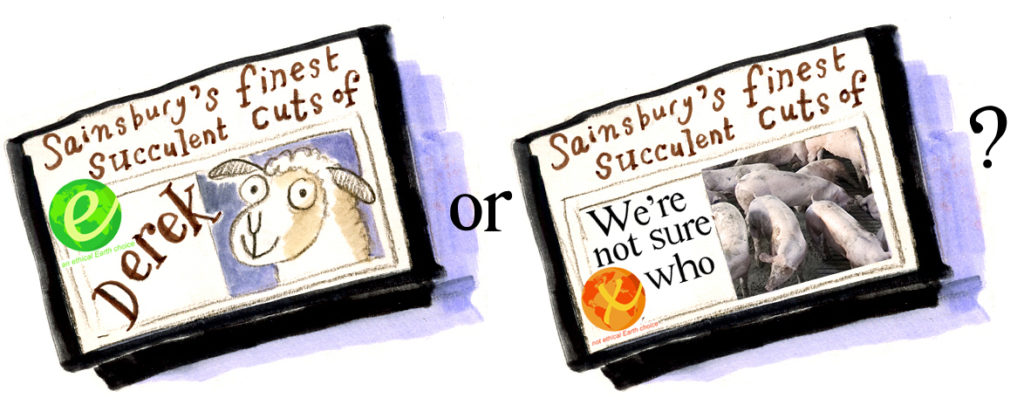
We can’t wait for all the world to agree. We have to lead by example. We have to model how to be good citizens of the Earth – by making less CO2, and do our part in protecting and boosting the nature on these islands, and making it wilder and better. It requires enlighted policy-making by a government that is acting in the interests of Biodiversity and the future inhabitants of Earth.
